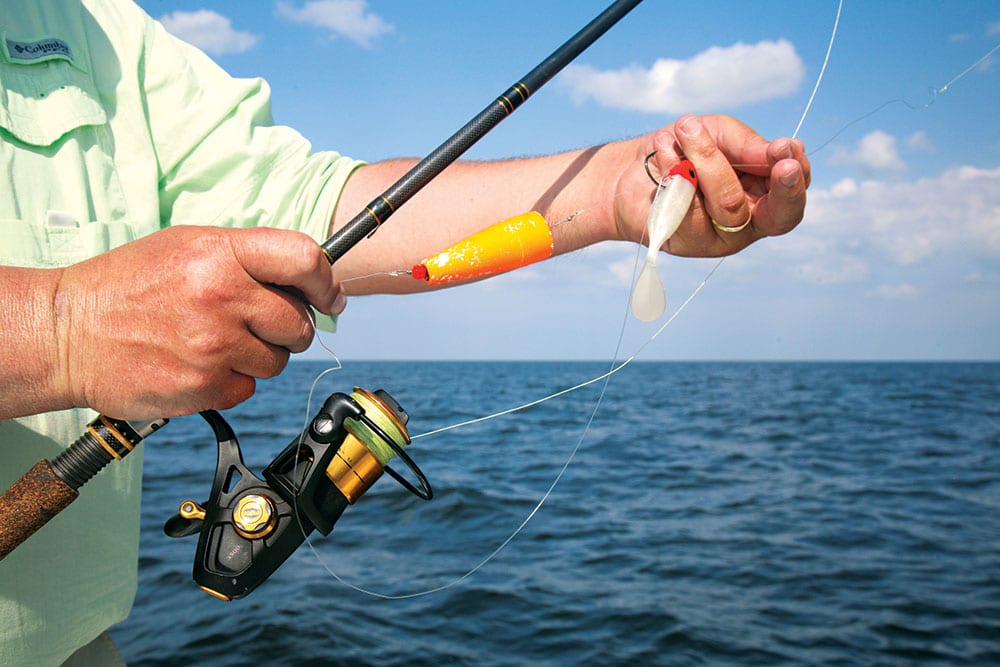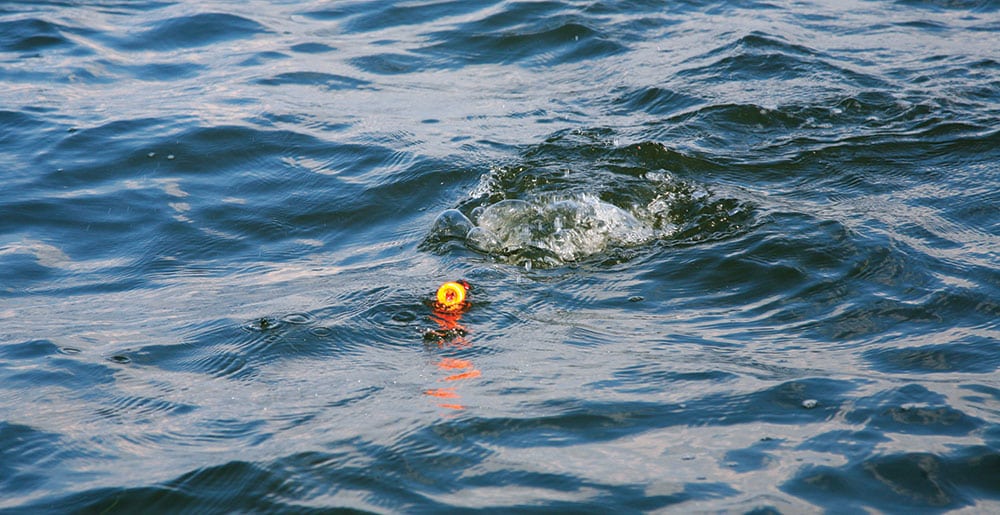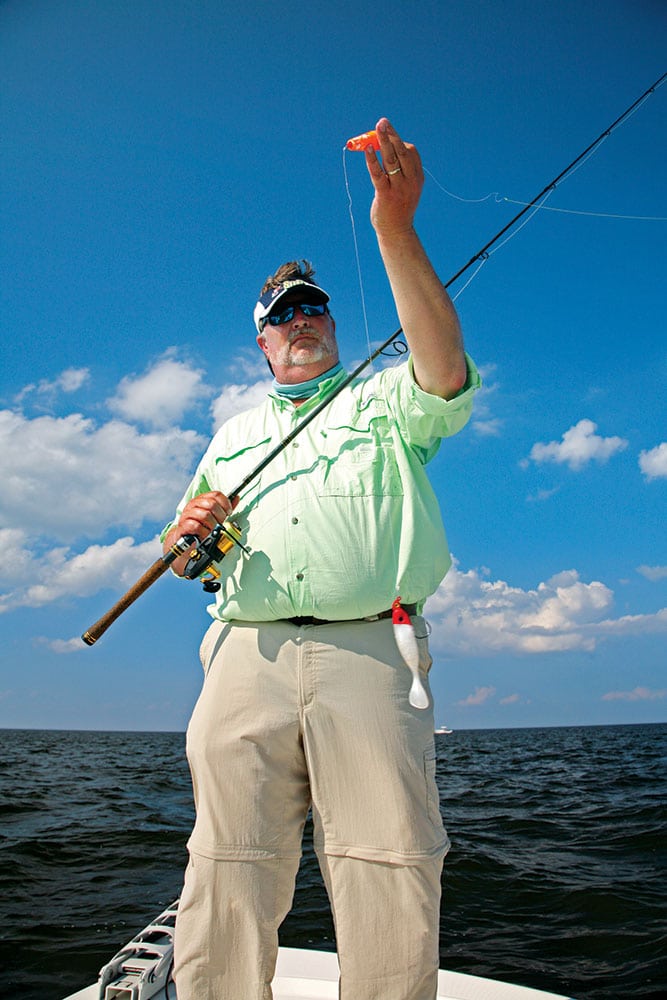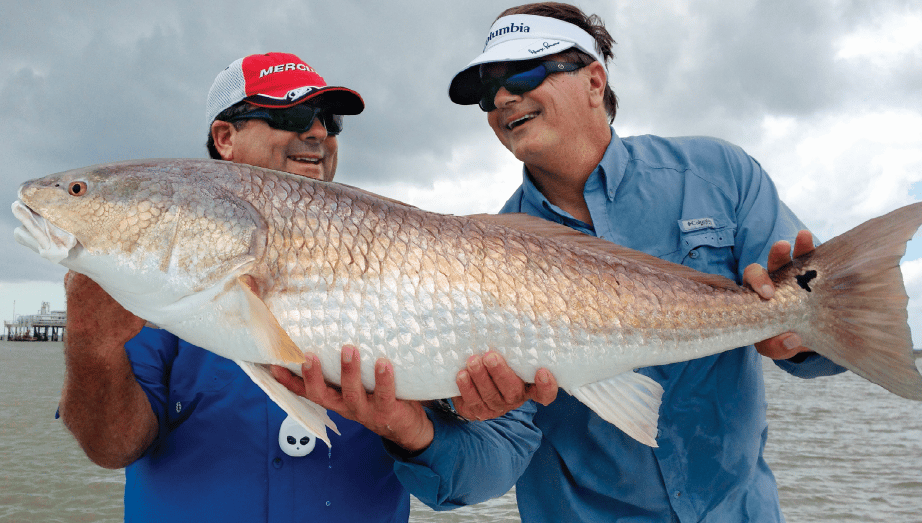
thumb tt pop
Capt. Gary Dubiel had us drifting along a ledge on a tranquil river near Oriental, North Carolina. We were after monster red drum, in sizes that made this region a revered destination. Rather than anchor and soak baits on circle hooks, we broke tradition by pitching popping corks and soft plastics on light spinning tackle.
Soon after a short-striking fish left a huge boil behind Dubiel’s float, I hooked up. Despite the 20-pound braid and fast-action rod, the power of this red drum was quite impressive. Some 15 tedious minutes after its initial 100-yard run, Dubiel slid the net under a massive red drum, which we promptly photographed and released.
Breaking Tradition
I’ve fished this area for giant red drum with Dubiel on a few occasions, adhering to the traditional tactic of taking a bushel or two of freshly caught mullet or menhaden, cutting them and then soaking four sections of bait on the bottom, each impaled onto a Lupton rig (a circle-hook/egg-sinker rig that prevents hooking fish deeply).
However, over the past year or so, Dubiel and other local anglers have been experimenting with popping corks and soft plastics. They’ve discovered what many trophy red drum anglers in Louisiana already knew: They’re devastating on big fish. Furthermore, it’s rare to hook a fish deeply.

The Alpha Popper
Some floats subtly complement live baits, whereas others seemingly breathe life into artificial lures. The difference is the aggressiveness and audibility of their popping or chugging. Sometimes with live bait, a softer noise is best because it won’t drown out their natural sounds and actions. For some lures, however, a louder sound and more vibration through the water are preferred, to draw fish in and onto the lure.
For big redfish and other large game fish pursued with a popping float, the traditional concave top version is the ticket. Unlike floats with rounder heads or less pronounced cups, those with a deep, concave top scoop up the largest volume of water. And since this float will be worked aggressively, opt for the version with ring eyes at both ends. This type of float sometimes comes with a bead or two at one or both ends, which augments the chugging and popping.
Capt. Mike Frenette of Venice, Louisiana, has been catching big red drum on popping floats for 30 years. When it’s calm, he uses a 3½-inch popping float to be more stealthy. When it’s choppy to rough, he ties on a 5-inch float to generate loud popping that permeates the surrounding water.

The Right Distance
Frenette typically fishes water less than 6 feet deep. Therefore, he ties on a light jig head with a plastic shrimp, grub or sometimes even a freshwater bass worm some 18 to 24 inches below the popper on 20- to 40-pound fluorocarbon leader.
Likewise, Dubiel contends that the jig should be close to the float in shallow or deep water. He reasons that the popping float draws fish to it, and if the jig is much beyond 36 inches away, fish might not see it. That’s why he adheres to a 24- to 36-inch gap, even in depths of up to 15 feet.
Plastic Fantastic
Due to the aggressiveness with which these floats are worked, plastic shrimp, grubs and tails are far more efficient than natural baits. They simply stay on the light (1⁄16- to ½-ounce) jig heads better than the generally more fragile natural baits. Plus, because the plastic artificials are bite-size, fish generally consume them in a single strike.
Nevertheless, because this tactic can be expanded to catch a variety of large game fish –– such as cobia, tarpon, snook, jack crevalle, bluefish, striped bass, Spanish mackerel, tripletail, sharks, dolphin and perhaps even tuna –– experimenting with crankbaits and and a variety of diving lures also holds promise. When a game fish dials in on the chugging sound, the sudden vision of a lure diving or speeding up like it’s attempting to flee could trigger a strike. What’s more, such hard baits also emit their own vibrations, offering yet another advantage.

Hardly Too Aggressive
Compared to the soft popping action desired when presenting natural bait or artificials to trout and puppy drum, popping for large game fish is aggressive business. Re-creating the sound of a big fish feeding is paramount. It accomplishes two things: First, it draws in fish that might not be near the boat (usually more than one fish is called in); second, it creates the illusion of fish competing for food, which often elicits strikes from fish that aren’t necessarily hungry.
Frenette prefers one aggressive pop of the float followed by a five-second pause; he repeats this routine all the way back to the boat. He reasons that a single pop sounds more natural, like a redfish capturing something at the surface. A common mistake is working the rig too quickly, Frenette explains. If you think you’re working the rig too slowly, you should slow down even more. And it’s during the pause when strikes tend to occur. Slow and aggressive garnishes strikes.
Cast the rig to slicks, edges of flats, drop-offs and baitfish schools. When the float hits the water, wind tight, grip the rod butt with one hand, grasp the reel seat or foregrip with your other hand, and rear back. Do this once, or double or triple up if you prefer, then rest the float for several seconds prior to repeating this action. Again, aggressive, deep chugs are desired, hence the gripping of the rod for maximum power and leverage.
The Strike
As mentioned, most strikes occur during the pause. When the float goes under, simply wind steadily and rapidly until the fish runs line off the reel and you’re confident of a positive hook-set. Then, enjoy your light tackle encounter.
Popping-float fishing is as elementary as it gets, with a long history of inshore reliability. But it’s increasingly becoming a viable option to catch a broader range of bigger game fish, and the fever is spreading. I guess it’s safe to say it has gone mainstream, again.









